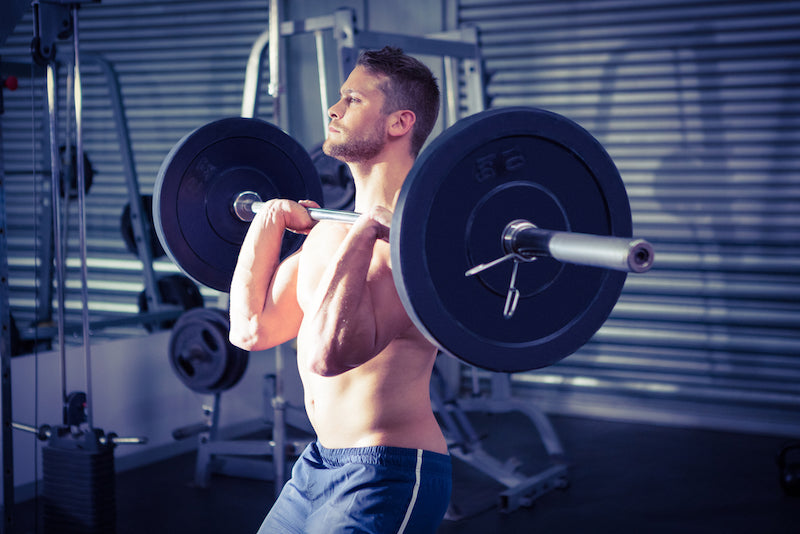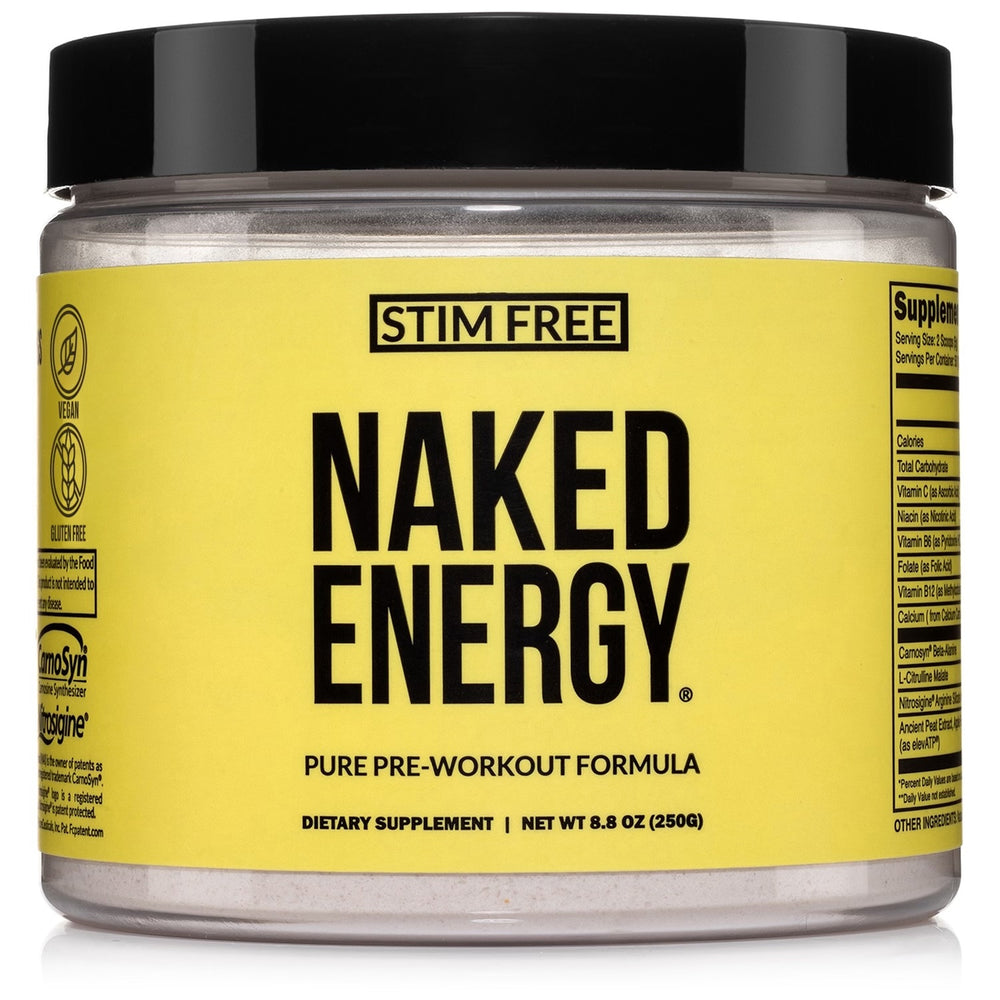Whether you’re a workout enthusiast or a bodybuilding beginner, strengthening your upper body is a key fitness goal. Two exercises, in particular, play a significant role in this area: overhead press vs shoulder press.
Each offers unique benefits and targets different muscle groups, making them both essential tools in your fitness arsenal. But what are the differences between them, and which one should you choose for your specific goals? Let’s dive in and find out.
Overhead Press Basics
The overhead press is a renowned compound exercise known for its focus on the development of the shoulders, triceps, and upper chest muscles.
This popular exercise not only enhances core stability, but it also contributes to overall upper-body strength. When you perform an overhead press, you engage a variety of muscle groups, including your core, shoulders, chest, triceps, deltoids, trapezius, and pectoral muscles. Even your abdominals and other stabilizer muscles are put to work, maintaining balance during the exercise.
One of the key elements of a successful overhead press is good form. Here are the steps to follow:
-
Start by standing straight with feet hip-width apart.
-
Hold the barbell above the chest with palms facing forward.
-
Bend the elbows and keep the shoulders down and back.
Another variation is the seated barbell press, which can be performed while sitting on a bench with back support.
Maintaining a firm core engagement during the overhead press is highly beneficial. It bolsters core stability, safeguards your lower back, and guarantees overall balance. For beginners or those with shoulder issues, using a shoulder press machine can help with stability.

Shoulder Press Basics
The shoulder press is another strength-training exercise designed to target the front and middle heads of the shoulder muscles. This exercise also works the accessory muscles of the upper back and upper arms.
Variations of the shoulder press include the machine shoulder press, which is considered a suitable exercise for beginners as it involves sitting in a machine and pressing the fixed resistance attached to it.
There’s a range of equipment that can be used for the shoulder press, including dumbbells, barbells, and machines. The barbell shoulder press is regarded as an excellent exercise for individuals at various proficiency levels, including beginners. Meanwhile, the machine shoulder press, with its adjustable resistance feature, is particularly recommended for beginners.
The shoulder press mainly concentrates on the front and middle sections of the shoulder muscles, while also activating the auxiliary muscles of the upper back and upper arms. For beginners, it’s recommended to start with just the bar to practice proper form and technique before adding weight.
Overhead Press and Shoulder Press: The Differences
Having established the fundamental aspects of the overhead press and shoulder press, we can now explore the principal differences between these two workouts.The barbell overhead press involves the use of a barbell and focuses on the anterior deltoids and traps.
On the other hand, the dumbbell shoulder press uses dumbbells, targets the anterior and medial deltoids and traps, and offers more flexibility in hand positioning. When the term shoulder press is used to differentiate from the overhead press, it typically indicates a machine variation that restricts hand movement.

Equipment Variations
Using different types of equipment can greatly influence your workout. Barbells, dumbbells, or machines can be used to perform the overhead press and shoulder press, each offering unique benefits.
Barbells are often used for both the overhead press and the shoulder press. Performing barbell lifts can improve shoulder mobility, stabilize the shoulder joints, and potentially enhance posture.
When performed correctly, barbell lifts can also help strengthen the back and core.
Alternatively, using dumbbells for these exercises offers the following benefits:
-
Enables a broader range of movement in the shoulders
-
Requires more muscle stabilization compared to barbells
-
Contributes to injury prevention
-
Enhances shoulder stability.
Machines, on the other hand, offer stability and assistance during workouts. They help target and predominantly engage the deltoid muscles, making them a suitable choice for beginners or individuals with shoulder stability concerns.
Muscle Activation and Range of Motion
The muscle activation and range of motion in the overhead press and shoulder press also differ.
While both exercises focus on the shoulders, triceps, and upper chest muscles, the overhead press primarily engages the deltoids with the triceps acting as secondary muscles.
The shoulder press isolates the deltoids, providing targeted strength training for this muscle group. In contrast, other exercises may engage additional muscles alongside the deltoids. Additionally, the back overhead press activates the posterior and medial deltoids more, whereas front presses favor the pectoralis major and triceps brachii.
In terms of the range of motion, the dumbbell shoulder press can provide a wider range, especially for individuals with limitations, as the dumbbells can be positioned in various ways, allowing for variations in elbow movement.
The barbell overhead press, however, restricts the range of motion due to the fixed hand position, resulting in less elbow movement.
Choosing the Right Exercise for Your Goals

Armed with a thorough comprehension of the overhead press and shoulder press, selecting the appropriate exercise that matches your fitness objectives is essential.
Whether they are centered around strength training, hypertrophy, or mobility and injury prevention, both exercises can be beneficial.
We will now further examine how each exercise can contribute towards accomplishing these specific goals.
Strength Training
When it comes to building overall upper body strength and power, both the overhead press and the shoulder press can be instrumental. These exercises are crucial in developing and fortifying the major muscle groups in the upper body, fundamental for overall strength.
For most lifters, it’s advised to incorporate both the barbell overhead press and dumbbell shoulder press into the routine, with the former serving as the primary compound exercise and the latter as a supplementary movement to establish a strong foundation of pressing strength.
Hypertrophy and Muscle Growth
For those looking to focus on muscle growth and hypertrophy, both the shoulder press and overhead press can be advantageous. The shoulder press is particularly beneficial for hypertrophy due to its ability to increase workout intensity and effectively stimulate the muscles around the shoulders, triceps, and upper chest.
The overhead press, on the other hand, enables greater control during both the concentric and eccentric phases of the exercise, leading to increased time under tension, which contributes to more muscle-building tension.

Mobility and Injury Prevention
Both exercises are effective for enhancing shoulder mobility and reducing the risk of injuries, provided they are practiced correctly and included in a well-rounded workout regimen.
Specific techniques that can be incorporated to improve flexibility and mobility in the shoulder region include:
-
Standing arm swings
-
Thoracic extension on a foam roller
-
Supine pull-over
-
Prone YTW
-
Prone swimmers
-
Supine wall angel
Summary
In summary, both the overhead press and shoulder press are essential exercises for upper body strength and muscle growth.
They target different muscle groups and offer unique benefits, making them versatile tools in any fitness routine.
Choosing between these exercises depends largely on your individual fitness goals, whether they are centered around strength training, hypertrophy, or mobility and injury prevention. With the right approach and technique, both exercises can contribute to a well-rounded workout regimen, enhancing your overall fitness and well-being.






